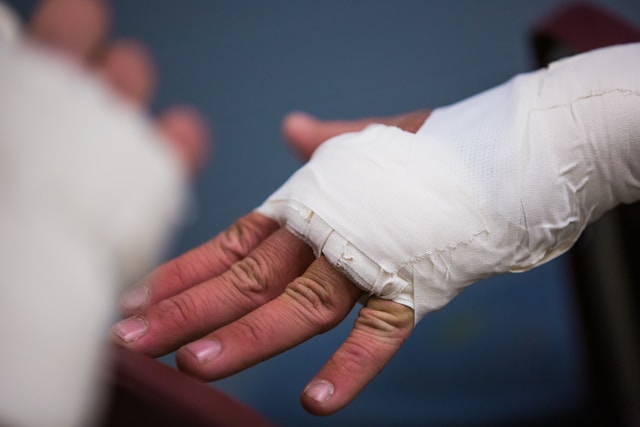
Personal injury law serves as the legal backbone for anyone harmed by another party’s negligence or intentional actions. At its essence, it ensures that victims do not shoulder the consequences of someone else’s carelessness. While many assume this field covers only physical injuries like fractures or lacerations, it encompasses emotional trauma, financial loss, and even reputational damage. From vehicular collisions and slip-and-fall accidents to medical malpractice and dangerous product claims, this area of law spans diverse circumstances. In each case, the injured party confronts not only pain and suffering but also mounting medical bills, loss of income, and long-term rehabilitation needs. Without a proper legal framework, these consequences can spiral into financial ruin.
Historically, personal injury law evolved from common law tort principles that date back centuries. Courts recognized early on that compensating victims would deter negligent behavior and promote public safety. Over time, legislatures codified statutes of limitations, damage caps, and procedural rules to balance plaintiff rights with defendant protections. Nevertheless, the core purpose remains unchanged: to make injured individuals whole again.
Moreover, personal injury law plays a crucial preventive role. By holding wrongdoers accountable, it incentivizes manufacturers, healthcare providers, and property owners to adopt safer practices. Consequently, it not only heals individual wounds but also fosters a culture of caution and responsibility across society.
The Road to Recovery: Legal Representation Matters
When an injury occurs, the path to recovery often depends heavily on securing experienced counsel. A seasoned personal injury attorney guides clients through complex legal processes, from gathering evidence to negotiating with insurance adjusters. Attorneys meticulously analyze medical records, consult expert witnesses, and reconstruct accident scenes to build a compelling case. Such thorough preparation proves indispensable when insurers attempt to minimize claims or attribute fault to the victim.
Furthermore, legal representatives handle the procedural intricacies that overwhelm most individuals. They file pleadings by strict deadlines, manage discovery requests, and draft persuasive demand letters. Rather than accepting a lowball settlement, an attorney will calculate the full extent of damages, including future medical treatments and lost earning capacity. In addition, many personal injury lawyers work on a contingency fee basis, meaning clients pay nothing upfront and attorneys receive payment only upon successful resolution. This arrangement grants access to high-quality legal advocacy regardless of one’s financial situation.
Equally important, attorneys provide emotional support during trying times. By taking on negotiations and paperwork, they allow injured clients to concentrate on healing. They also offer candid counsel about case strengths and potential challenges, setting realistic expectations. Ultimately, legal representation transforms uncertainty into a structured recovery plan, ensuring victims pursue maximum compensation with confidence.
Financial Compensation: Rebuilding What’s Lost
Beyond initial medical bills, a comprehensive personal injury claim addresses a spectrum of economic and noneconomic losses. Economic damages include hospital expenses, physical therapy, prescription costs, property repair or replacement, and lost wages. Attorneys carefully document these figures, often enlisting vocational experts to assess diminished future earning power.
On the other hand, noneconomic damages capture intangible harms such as pain and suffering, emotional distress, loss of enjoyment of life, and loss of consortium. Although these are harder to quantify, courts and insurers recognize their profound impact on a person’s well-being. In catastrophic injury cases—such as traumatic brain injuries or spinal cord damage—noneconomic awards can dwarf medical costs, reflecting lifelong limitations and psychological trauma. In some jurisdictions, punitive damages may also apply when a defendant’s conduct displays gross negligence or malice. Such awards not only punish wrongdoers but also deter similar misconduct.
Importantly, attorneys negotiate or litigate to secure compensation that truly reflects both present and anticipated future needs. They prepare detailed life care plans that outline ongoing treatment, assistive devices, home modifications, and caregiving expenses. By doing so, victims receive the financial foundation necessary to restore independence and quality of life. Families avoid depleting savings or accruing insurmountable debt, allowing them to focus on emotional recovery rather than financial survival.
Protecting Futures: Long-Term Impact of Legal Action
Pursuing a personal injury claim yields benefits that extend well beyond individual compensation. On a societal level, successful litigation often prompts safer practices and regulatory reforms. When a high-profile product liability lawsuit uncovers design flaws, regulators may mandate recalls and stricter manufacturing standards. Municipalities confronted with lawsuits over poorly maintained roads or sidewalks typically prioritize infrastructure repairs, reducing risks for the community.
Furthermore, public awareness campaigns frequently accompany landmark cases, educating consumers and workplaces about potential hazards. In this way, personal injury law functions as a catalyst for change, encouraging systemic safety improvements that safeguard countless lives.
For victims, the long-term impact of obtaining justice cannot be overstated. Receiving a fair verdict affirms their dignity and validates their suffering. It empowers them to rebuild homes, finance ongoing care, and resume meaningful activities. Moreover, the deterrent effect of litigation promotes accountability. Wrongdoers learn that negligence carries real consequences, encouraging more responsible conduct in the future.
In a world where one moment of oversight can irreversibly alter lives, personal injury law stands as a bulwark against injustice. Through expert advocacy, thorough compensation, and lasting preventive effects, it not only mends broken bones but also heals broken lives—ultimately saving the day for individuals and communities alike.